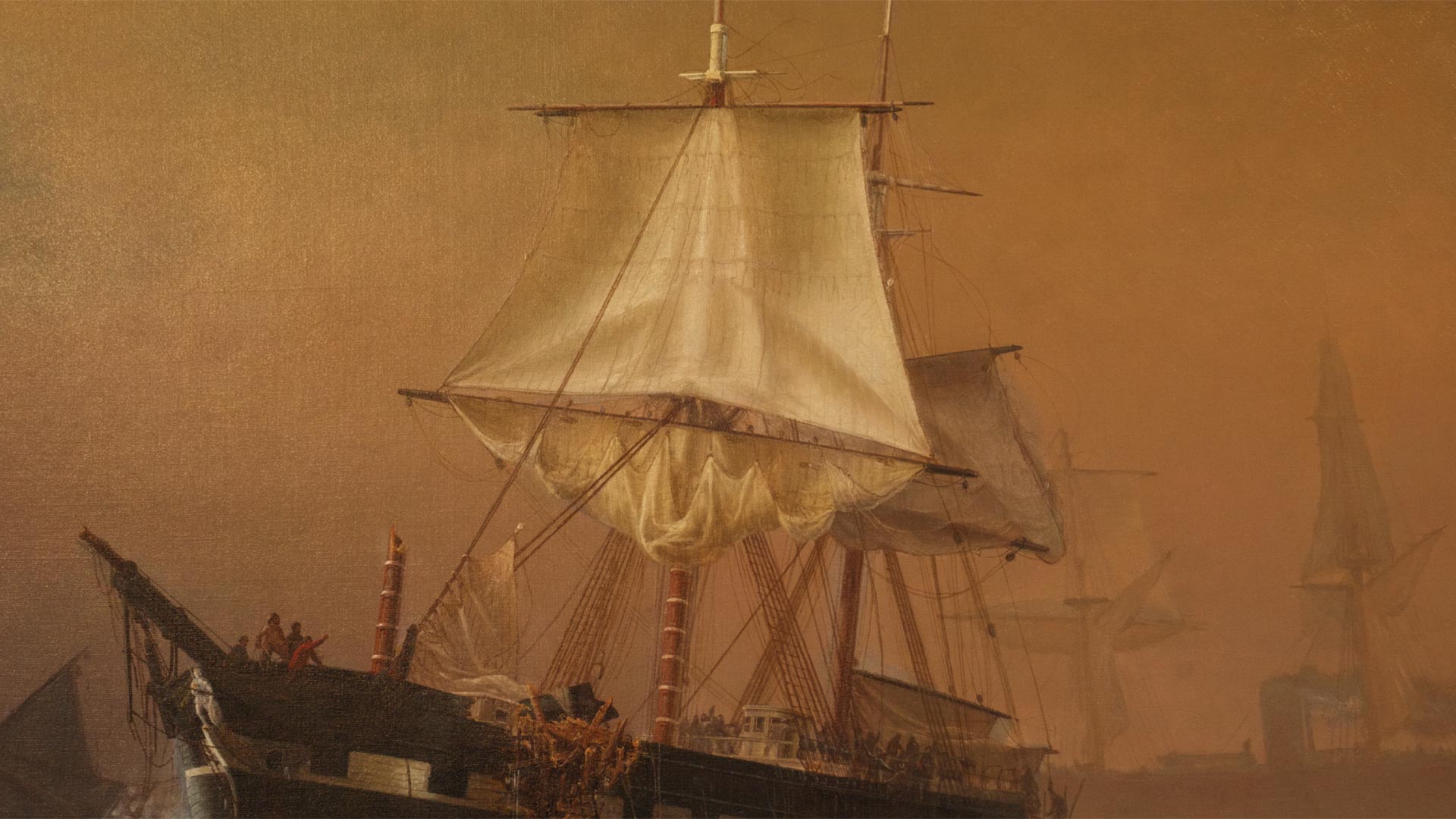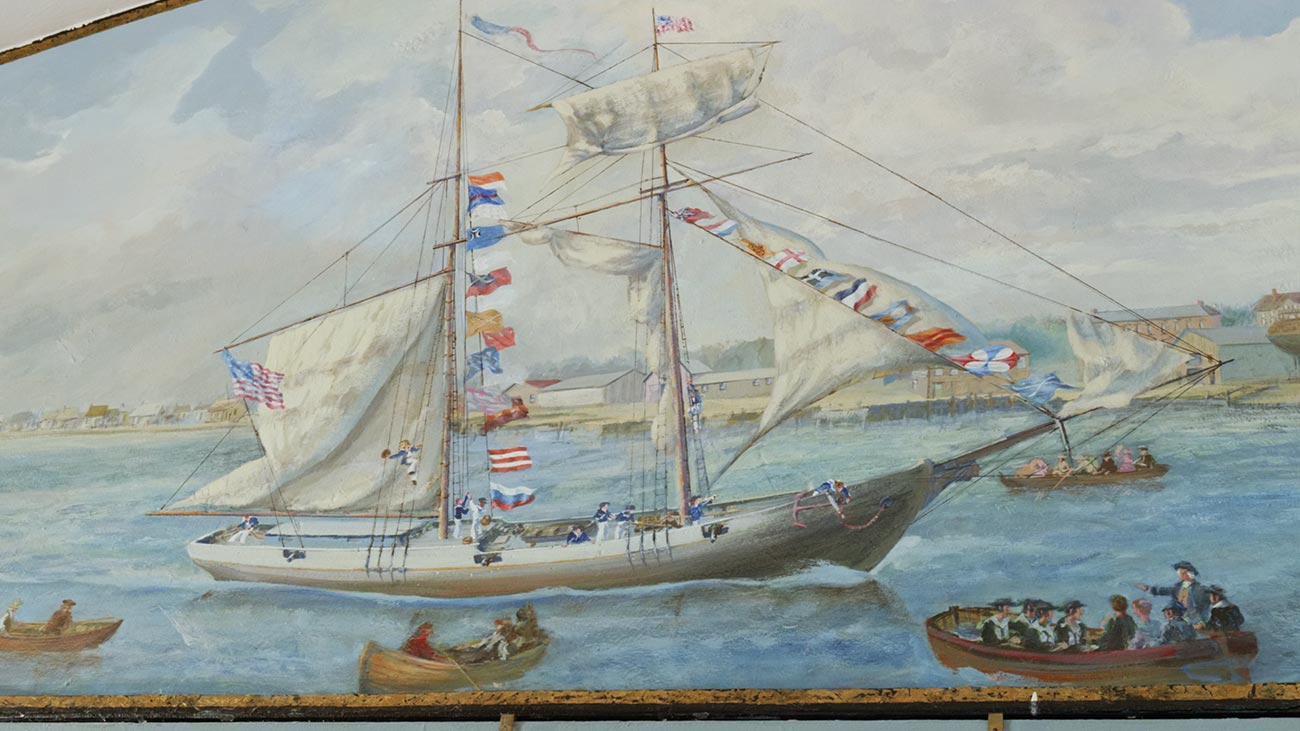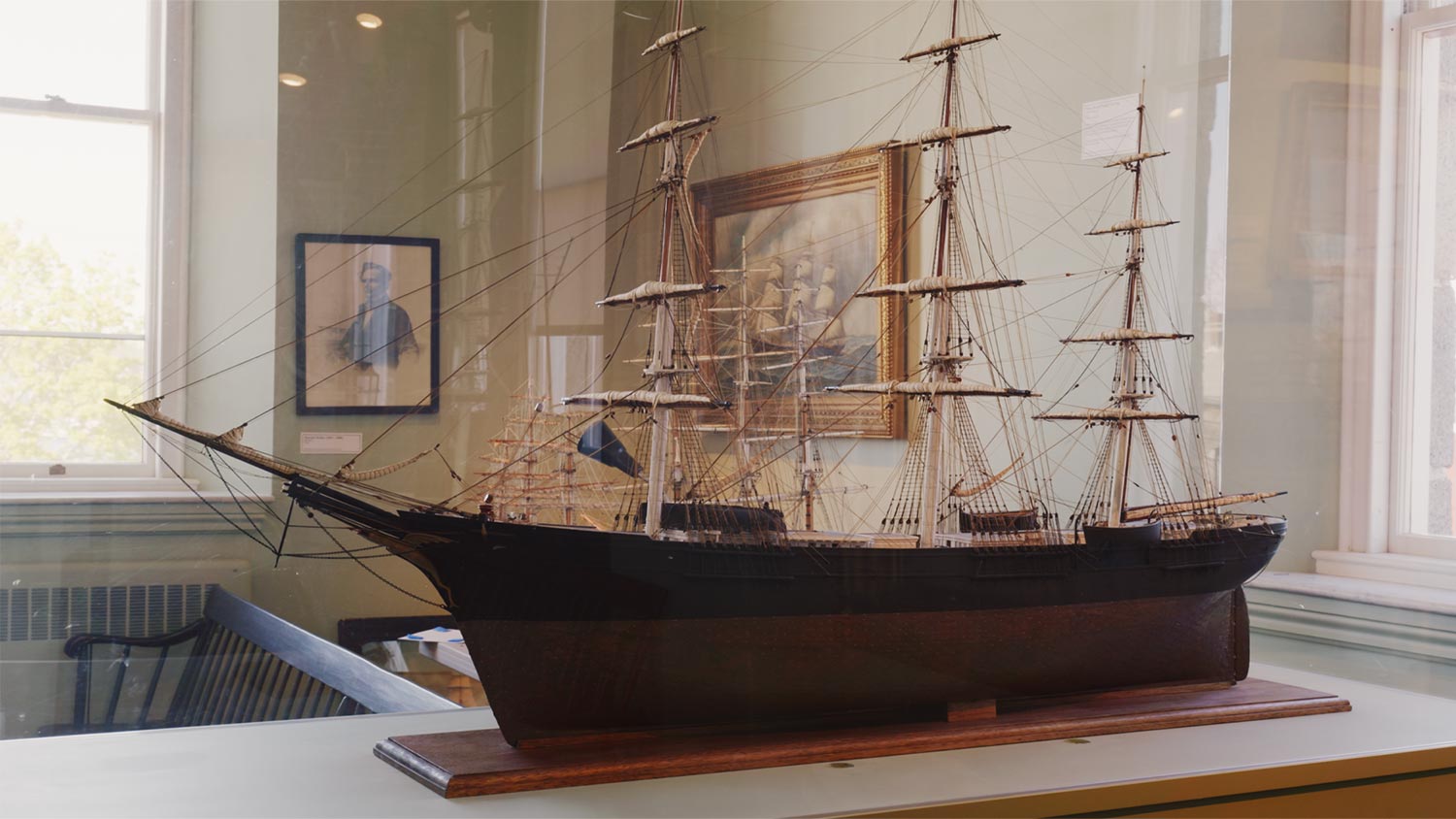The Custom House is…
The CHMM is a dynamic maritime history museum; education and cultural center; emerging research facility; and a meeting place for people seeking a unique venue for professional or social gatherings. We connect our vibrant past to our living present through our relationships with local educational, artistic, business, and environmental organizations.
Housed in this historic structure, the CHMM’s unique collection of maritime objects, art, models, and historical documents reflect the rich history of the region from the seventeenth to the twentieth century.
Watch 10,000 Years of Newburyport history in 5 minutes. In the video above, Curator Kevin tells the story of Newburyport and the exciting collections of the Custom House Maritime Museum.
Our Exhibits
The CHMM has multiple galleries, each focused thematically on historical narratives unique to the Custom House and its collection.
Plan Your Visit
Admission is free with any membership level. For non-members, tickets can be purchased at the museum. Tickets are $10 for adults and free for Newburyport residents.
Venue Rental
Often described as ‘The Gem of Downtown Newburyport,’ the Custom House Maritime Museum (CHMM) is the perfect location for your special event. We regularly host elegant coastal weddings, bar and bat mitzvahs, rehearsal dinners, birthday parties, corporate events and much more.
Learn Newburyport History
From High Street to the shores of the Merrimack, the neighborhoods of Newburyport are steeped in maritime history, rich with stories of the people who helped build this city, explored these waters, and founded our nation. From its settlement to its rise as a maritime hub, and to its rebirth, the CHMM tells this story.






